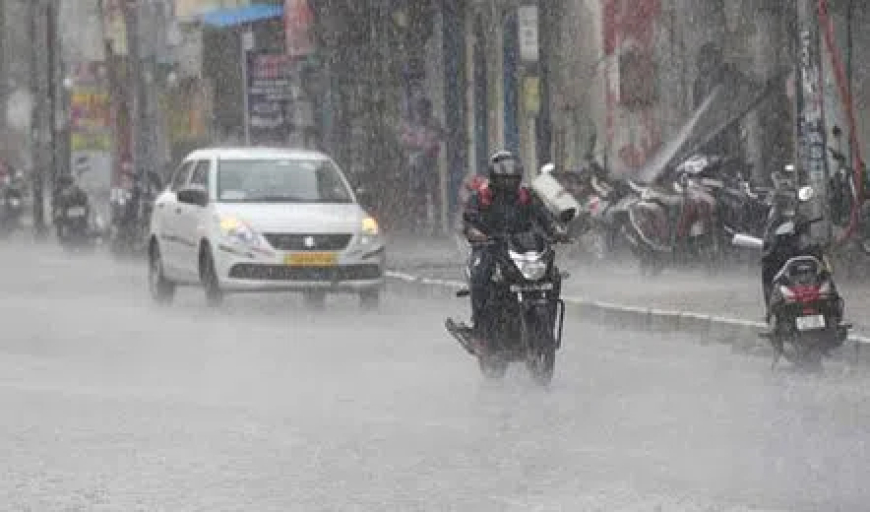Heavy Rainfall in Andhra Pradesh: IMD Issues Red Alert for 10 Districts on August 18th
IMD issues red alert for extremely heavy rainfall in 10 Andhra Pradesh districts on Aug 18th. Stay safe with latest weather updates & warnings.

Andhra Pradesh is currently witnessing one of the heaviest rainfalls of the season, with the India Meteorological Department (IMD) issuing a red alert for extremely heavy rains across 10 districts on August 18th, 2025. The warning highlights the severity of the situation, urging citizens and authorities to remain cautious as continuous downpours disrupt normal life in several regions.
Present Weather Situation in Andhra Pradesh
According to IMD reports, heavy to extremely heavy rainfall has been recorded in districts including Visakhapatnam, East Godavari, West Godavari, Krishna, Guntur, Prakasam, Nellore, Anantapur, Kurnool, and Chittoor. Many low-lying areas are already facing waterlogging, and rivers like Godavari and Krishna are swelling due to increased inflows from catchment areas.
How Many Days Will the Rains Last?
Meteorologists have predicted that rainfall is likely to continue for the next 3–4 days, with the intensity being at its peak on August 18th. The red alert indicates that rainfall could exceed 200 mm in 24 hours in some districts, causing a high risk of flooding, landslides, and transportation disruptions.
Areas Under Red Alert
-
North Coastal Andhra Pradesh: Visakhapatnam, East Godavari
-
South Coastal Andhra Pradesh: Nellore, Prakasam
-
Rayalaseema Region: Chittoor, Anantapur, Kurnool
-
Central Andhra: Guntur, Krishna, West Godavari
Authorities have been asked to stay on high alert, and emergency response teams are on standby.
Important Updates and Significance
-
Schools and Colleges: In some districts, educational institutions have been declared closed to ensure student safety.
-
Transport Disruption: Train and bus services have been delayed due to track flooding and poor road conditions.
-
Power Outages: Several towns are facing power cuts as a precaution against accidents.
-
Rescue Teams: NDRF and SDRF teams have been deployed in sensitive areas.
Positive and Negative Impacts
Positives:
-
Heavy rains help replenish groundwater and fill reservoirs, which benefits agriculture and power generation.
-
Farmers dependent on rain-fed crops like paddy and pulses will see improved yields if flooding is controlled.
Negatives:
-
Risk of flash floods, property damage, and loss of livelihoods.
-
Transportation and daily life severely affected.
-
Health concerns may arise due to waterlogging, mosquito breeding, and contaminated drinking water.
Advantages and Disadvantages
Advantages:
-
Boosts water storage for irrigation and drinking purposes.
-
Improves soil moisture and ensures better crop production.
-
Supports hydropower generation and reduces future water scarcity risks.
Disadvantages:
-
Flood risk can damage standing crops and homes.
-
Infrastructure like roads, bridges, and electricity lines may be damaged.
-
Displacement of families in flood-prone areas and risk to human lives.
Final Thought and Conclusion
The IMD’s red alert for Andhra Pradesh on August 18th underlines the seriousness of the situation. While heavy rainfall brings long-term benefits like water conservation and agricultural growth, the immediate challenges cannot be ignored. Preparedness and timely government action are key to minimizing losses. Citizens are advised to avoid unnecessary travel, stay indoors, and follow official updates closely.
In conclusion, this spell of heavy rainfall in Andhra Pradesh serves as a reminder of the dual nature of monsoon—a blessing for agriculture but a challenge for safety and infrastructure. Strong disaster management, awareness, and resilience are crucial to turning this challenge into an opportunity for better preparedness in the future.

 Ellofacts
Ellofacts 





